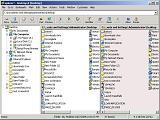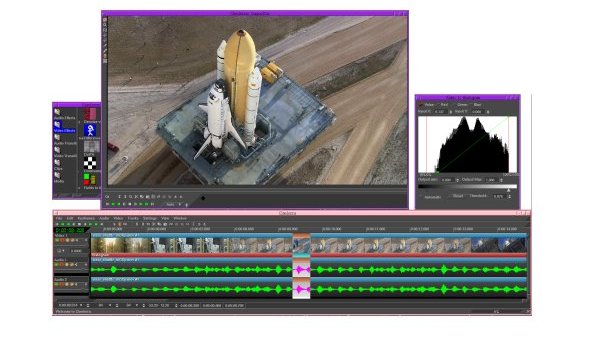people are still under the delusion that Linux is written by unwashed
hackers living in their parents' basements whose only social life is
playing D&D and having flame wars over IRC (Internet Relay Chat)
about whether vi or EMACS better and debating Picard versus Kirk.
Nothing, nothing could be further from the truth.
The LF (Linux
Foundation) has just released a new report, "Linux Kernel Development:
How Fast It is Going, Who is Doing It, What They are Doing, and Who is
Sponsoring It." This comprehensive study of the last three years of
Linux kernel development, from version 2.6.11 to 2.6.24 releases,
reveals that the average Linux developer is being paid by a major
corporation to develop Linux.
To be exact, between 70 and 95
percent of Linux developers over the last three years have been paid to
work on Linux. According to the report, "More than 70 percent of total
contributions to the kernel come from developers working at [such
companies as] IBM, Intel, The Linux Foundation, MIPS Technology,
MontaVista, Movial, NetApp, Novell and Red Hat."
Over the years,
the number of Linux developers has been increasing. Version 2.6.11 had
only 483 programmers whose code actually made it into the kernel. The
latest kernel, 2.6.24, had 1,057 developers. Over the last three years,
3,678 programmers have had their work included in Linux's core.
That
said, the report also stated that "despite the large number of
individual developers, there is still a relatively small number who are
doing the majority of the work. Over the past three years, the top 10
individual developers have contributed almost 15 percent of the number
of changes and the top 30 developers have contributed 30 percent."
In
fact, the top five developers, Al Viro (1.9 percent of the total
percentage of changes to the kernel); David Miller (1.8 percent);
Adrian Bunk (1.7 percent); Ralf Baechle (1.6 percent); and Andrew
Morton (1.5 percent), alone accounted for 8.5 percent of Linux's recent
code changes.
Of all the developers, 74.1 percent work on Linux
for their companies. Of the rest, many programmers—12.9 percent with
unknown employers—made 10 changes or less to the kernel. Only 13.9
percent of developers were clearly working on Linux as a hobby.
So,
while Linux does have a substantial contribution being made to it by
amateurs, the vast bulk of it is being written by corporate
programmers. The companies that are building Linux, in order of their
contributions to the kernel, are:
1) Red Hat, 11.2 percent
2) Novell, 8.9 percent
3) IBM, 8.3 percent
4) Intel, 4.1 percent
5) LF, 3.5 percent
6) SGI, 2.0 percent
7) MIPS Technology, 1.6 percent
9) MontaVista, 1.2 percent
10) Lintronix, 1.0 percent.
In addition, consultants' efforts have counted for 2.5 percent of the total work on Linux.
The
authors of the study, Linux kernel developers Jonathan Corbet and Greg
Kroah-Hartman, and Linux Foundation Director of Marketing Amanda
McPherson, also note that, "What we see here is that a small number of
companies are responsible for a large portion of the total changes to
the kernel. But there is a 'long tail' of companies which have made
significant changes."
They also point out in the study that
"none of these companies are supporting Linux development as an act of
charity; in each case, these companies find that improving the kernel
helps them to be more competitive in their markets."
Besides
Linux distributors, like Red Hat, Novell and MontaVista, where the
profit motive is clear, the study also finds that "companies like IBM,
Intel, SGI, MIPS, Freescale, HP, etc. are all working to ensure that
Linux runs well on their hardware. That, in turn, makes their offerings
more attractive to Linux users, resulting in increased sales."
Other
businesses that work on developing Linux, "like Sony, Nokia, and
Samsung ship Linux as a component of products like video cameras,
television sets, and mobile telephones. Working with the development
process helps these companies ensure that Linux will continue to be a
solid base for their products in the future."
It's not just IT
companies these days that are working on improving Linux. For example,
the study's writers state that "The 2.6.25 kernel will include an
implementation of the PF_CAN [Controller Area Network] network protocol
which was contributed by Volkswagen. PF_CAN allows for reliable
communications between components in an interference-prone
environment—such as that found in an automobile. Linux gave Volkswagen
a platform upon which it could build its networking code; the company
then found it worthwhile to contribute the code back so that it could
be maintained with the rest of the kernel."
So since your
typical Linux developer is more likely to be a full-time, upper-middle
class software engineer, why does the FUD about Linux developers still
hang on? McPherson believes it's because "it's difficult for most
people to get their minds around competitive mass collaboration. It's
obviously a huge shift from the command and control models of old. Most
people seem to have a hard time understanding that companies will pay
people to work on software that their competitors use and profit from."
McPherson
continued: "People are still stuck in the zero sum game of the past.
But now, with papers like this, they can see that companies who support
open source actually profit through a shared R&D cost. The myth
persists but as open source is becoming more common than proprietary
development; I think you'll see a shift in understanding."
source













